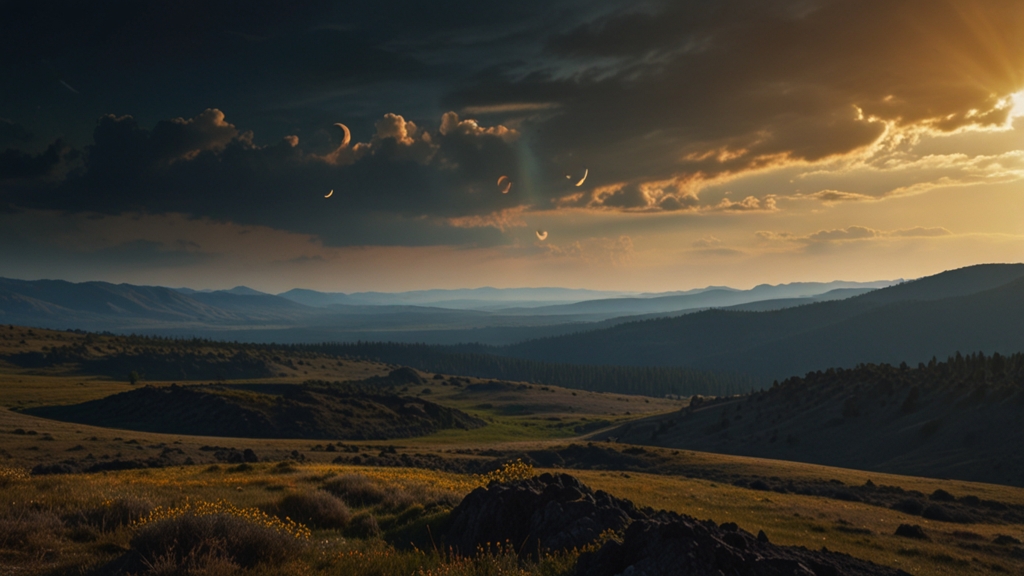Chasing Solar Eclipses: Why This Natural Wonder Captivates Us
Every so often, the moon gracefully slides in front of the sun, casting a shadow upon our world and turning day into an awe-inspiring twilight. This phenomenon, known as a solar eclipse, has long fascinated humankind. From ancient civilizations interpreting them as omens, to modern-day eclipse chasers journeying across the globe, solar eclipses continue to captivate us in ways that are both profound and universal.
The Mystique of Solar Eclipses
At its core, a solar eclipse is a cosmic coincidence. The sun is about 400 times larger than the moon, yet the moon is about 400 times closer to Earth, allowing it to perfectly cover the sun's bright disk during an eclipse. This precise alignment occurs only when the sun, moon, and Earth are in a direct line, a rarity that adds to the mystique and allure of the event.
In ancient times, solar eclipses were often seen as poignant harbingers. The sudden disappearance of the sun could incite fear and awe, leading to various mythologies and rituals. From the Chinese dragon devouring the sun to the Norse belief in wolves chasing the celestial bodies, these stories reflect humanity’s enduring attempt to understand and contextualize this natural phenomenon.
"The sight of an eclipse plunges us into a startling, almost primal realization of nature's grand powers," said Dr. Samuel Harper, a noted astronomer. "It's a moment that blindsides our routine expectations, making us rethink our place in the universe."
The Modern-Day Eclipse Chaser
Today, the fear has been replaced by fascination, as understanding has replaced superstition. The rise of modern science has demystified the solar eclipse, turning it into an object of study as well as wonder. For some, the pursuit of eclipses has become a lifelong quest.
These modern-day adventurers, known as eclipse chasers or "umbraphiles," invest significant time and resources to witness these celestial events. Equipped with telescopes, cameras, and protective eyewear, they travel to locations within the path of totality – the area where the total eclipse is visible – to experience the breathtaking phenomenon.
"There's nothing like it," says Laura Williams, an avid eclipse chaser who's witnessed eight total solar eclipses. "When that shadow comes over you, and the stars come out in the middle of the day, it's a feeling that’s hard to describe but impossible to forget."
The Scientific Significance
Beyond the visual spectacle and personal experiences, solar eclipses hold immense scientific value. During a total eclipse, the moon obscures the sun’s bright photosphere, revealing the faint and elusive solar corona – the sun’s outer atmosphere. This presents a rare opportunity for solar scientists to study the corona’s structure and dynamics, which are difficult to observe under normal conditions.
Historically, eclipses have contributed to major scientific advancements. For instance, during the solar eclipse of 1919, Sir Arthur Eddington’s observations provided one of the first empirical confirmations of Einstein's theory of General Relativity. By measuring the apparent position of stars near the sun during the eclipse, Eddington demonstrated the warping of light, supporting Einstein’s groundbreaking proposal that massive objects distort the fabric of spacetime.
"Eclipses are not just pretty displays; they are windows into the mechanics of our universe," remarks Dr. Eleanor Craig, a solar physicist. "Each one we observe furthers our understanding of solar and cosmic phenomena."
The Shared Experience
Perhaps one of the most captivating aspects of a solar eclipse is its communal nature. Unlike many natural phenomena that can be enjoyed in solitude, an eclipse often brings together diverse groups of people, fostering a sense of shared experience and wonder. In those moments of totality, differences fade, and the collective gaze unites under the celestial grandeur.
In a world increasingly divided, the universal appeal of a solar eclipse reminds us of our shared humanity and our place in the vast cosmos. The next time the moon’s shadow graces our earthly stage, take a moment to look up and be part of this timeless, unifying spectacle.
Conclusion
Whether viewed through the lens of scientific inquiry, historical significance, or personal awe, solar eclipses continue to enchant and inspire. They are reminders of the cosmic ballet that governs our skies and a testament to the enduring curiosity that drives us to chase these fleeting shadows across the globe.
From ancient myths to modern adventures, the pursuit of solar eclipses touches on something quintessentially human – our relentless desire to understand, experience, and be moved by the sublime forces of nature.










